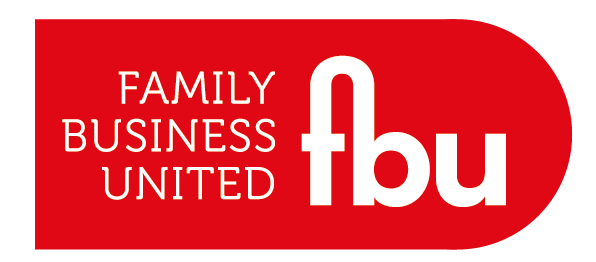Get in touch: nick.mayhew@alembicstrategy.com
The word ‘change’ is often overlooked. At just 6 letters, the word is diminutive in appearance, almost insignificant, but it holds a far deeper meaning than it reveals upon first sight. Change gets used with such carefree abandon that its meaning is often diluted down to a perfunctory term. But if you focus on the act of change itself, whether it’s on a personal, business or even a global level, it can be incredibly powerful. In fact, it transforms into the complete opposite of insignificant to become a catalyst for something new.

This article explores the topic of what change can mean, and why it becomes so much harder to manage as it is scaled up from a personal level into more complex scenarios such as business.
Change on a personal level
Change means different things to different people. Change on a personal level might mean changing the clocks by adjusting them an hour to British Summer Time. It could be a change to your diet to improve your health. Or changing your hairstyle, the way you dress, or to get more exercise. These are all things that you can choose to change yourself with relative ease, and can be carried out independently of others. Bringing about change on a personal level is usually much simpler due to the fact that other people don’t need to be consulted or even included in the change process. Put simply, it’s all on you!
More significant change
More complicated change occurs when other people become involved in the process. Moving home for example. You will inevitably have to communicate with other people at multiple stages during the move to organise, agree and facilitate the change of location.
Similar to moving home is changing your job. Starting a new role in a different company involves an exchange between both employer and employee to ensure the right person is moving into the right role. The change itself extends beyond your own consideration to involve others, therefore, it becomes more complex. When this occurs, factors such as agreement around the job description and integration into the business need to be considered. If there is misalignment between the two parties on some aspects, the facilitation of change will encounter friction, and friction will hinder, or worse, prevent the change process.
How change affects teams
Scaling up change when other people are involved always makes it more difficult. For example, imagine you’ve started a new job and are beginning to integrate with a team, or perhaps lead one. You might need to alter the way you work to fit in, or the team might need to alter the way it operates to suit you. Let’s say you’ve joined a team that is launching a new product into a new market and you’ve been called in because the team needs to source a different set of skills with niche expertise. Not only will the team face the challenge of diversification, but it may need to change the way it works by accommodating new personalities and the varying characteristics that you bring in addition to new expertise.
Consider how your arrival might:
-
Impact on the overall team dynamic
-
Bring a character mismatch to the team
-
Clash with the values of others
-
Compromise productivity due to alternative working style
You might have been the perfect candidate in the interview, but in practice, a different story might unfold. This scenario can and does occur despite the best efforts of the hirer to create positive change for their business. It’s something that can so easily be overlooked when this type of change occurs, but can have a profound effect on productivity.
Significant change in business
Change at business level presents a whole new challenge. Anyone that’s been given the task of changing the commercial course of a company will know how trying this can be. Not only must the leader of change handle their own need for transformation, but they must also manage the desires and expectations of the workforce, shareholders and their customers.
But why does business change need to happen? When an organisation has to change, it tends to be in response to a range of factors, including:
-
Shifting market trends
-
Change in buyer habits
-
Increased competition
-
Production costs rising
-
Macro changes - see PESTLE
 When any of these factors occur, a business must respond or risk a decline in profitability. The response will undoubtedly have an effect on those within the business, and likely force them to alter the way they work. The key thing to note here is how people in the team respond to change - are they willing to accommodate new ways of working, a new format within their day, new reporting methods, maybe even having to adjust to new colleagues being around them? Whilst seemingly insignificant, even minor change can be met with resistance by some. Multiply that resistance up over a large workforce and you can see why leaders must have very specific characteristics to see change through successfully.
When any of these factors occur, a business must respond or risk a decline in profitability. The response will undoubtedly have an effect on those within the business, and likely force them to alter the way they work. The key thing to note here is how people in the team respond to change - are they willing to accommodate new ways of working, a new format within their day, new reporting methods, maybe even having to adjust to new colleagues being around them? Whilst seemingly insignificant, even minor change can be met with resistance by some. Multiply that resistance up over a large workforce and you can see why leaders must have very specific characteristics to see change through successfully.
Why is business change so hard?
There are a number of reasons which make business change such a challenge. Here are some of the more significant factors that can prevent successful change transformation.
1. Lack of trust: without trust in the reasons for change, success is compromised. Imagine being in the back seat of a car being driven by someone who has so far not inspired your trust in their driving ability - would you be happy travelling along a motorway? It’s the same in business. Trust in the leadership is central to ensuring the buy-in of the people reporting in to them.
2. Fear or uncertainty: when a team member is unsure about how the change will affect them, they become less efficient, tend to worry about the change facing them, and may consider alternative options for themselves. Fear or uncertainty can be minimised by articulating aspects of the change and bringing clarity to those facing it.
3. Habits are hard to change: when the efficient rhythm of your workflow is compromised by alterations to the process, it’s only natural to be unsettled and revert to the old method almost by default. This is where old habits can override the new from time to time. Embedding new transformation through the right training, accompanied by reasons why the change benefits the new outcome, can help to eradicate old and outdated habits.
 The Motivational Triad
The Motivational Triad
This illustration of the Motivational Triad, described in the book The Pleasure Trap, has been a driving force in the way that humans have made decisions since the beginning of their existence. The triad suggests that humans inherently strive to achieve 3 things:
-
To seek pleasure
-
Avoid pain
-
Be energy efficient
Consider how the process of change might clash with each of the 3 aspects listed here. One might conclude that it's only natural for anyone experiencing change to be compromised in their pursuit of these primal objectives. This can only hinder the change process further.
How to increase the likelihood of change success
To maximise the likelihood of successful change, it’s worth observing that those within the team need to be made aware of some key details, including:
-
Why the change is necessary
-
How it affects their role within the team
-
How they must change in order to fulfil their duties
-
When the change will begin and for how long
If a team leader was to instigate change without addressing the fundamental points listed here, there's a strong likelihood that team members will fail to sign up for the task with the level of commitment required to successfully achieve change. This will, in turn, undermine the objective and potentially result in project failure, damage to the team, and also the business itself.
 It’s essential for leaders to be clear about the reason for change and why it is essential for the business to undertake the transformation to something new. Failure to communicate the reason for change will simply leave people wondering exactly why and what all the fuss is about and why it’s happening to them.
It’s essential for leaders to be clear about the reason for change and why it is essential for the business to undertake the transformation to something new. Failure to communicate the reason for change will simply leave people wondering exactly why and what all the fuss is about and why it’s happening to them.
Leaders must articulate a powerful vision for change with clarity, meaning and impact if they are to ensure 100% commitment from their teams. The vision must inspire, generate energy and encourage alignment, and also offer the workforce a guiding light to follow, along the pathway to the new horizon. Sure, this might sound like a slightly corny metaphor for leadership vision, but the need for such statements to evoke the passion in people is mission-critical if change is to be successful.
Get in touch: nick.mayhew@alembicstrategy.com




